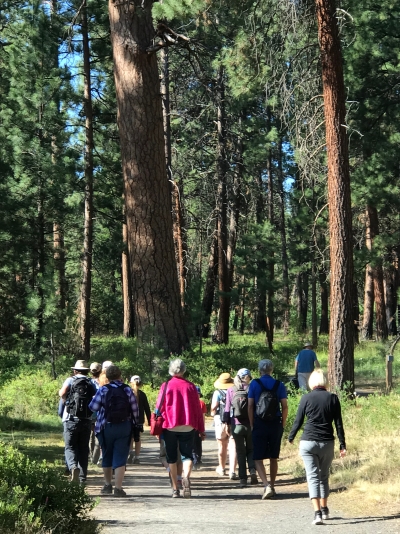 Recently, I was asked to share ideas with a tour director who was new to leading natural history walks. Here are some simple tips:
Recently, I was asked to share ideas with a tour director who was new to leading natural history walks. Here are some simple tips:
When introducing folks to a natural area I like to include in my welcome, “Are there things on this walk that you’d like to know more about?” People almost always want to know about poison ivy/oak and if they will be encountering any. Answering this takes some of the uncertainty people might have about an area off the table and helps them better enjoy the walk.
You’re not there to be an encyclopedia.
Do know the “big idea” of your walk. A big idea is what you want them to take when they leave.
If you know of any good stories about the area, place names, or local colorful characters, share them.
Think of things where people can engage their senses: look, listen, and feel.
When you visit a neat spot (beaver pond, an interesting grove of trees, etc), ask, “What do you think you know about this?” Get them to respond and share information. Everything has a story; people of First Nations or settlers could have used even an unassuming plant as an important resource.
If there is an area where people can be comfortable have them sit in silence for several minutes (3 is ok). Afterward, ask them what they see, hear, smell, and feel.
Point out any temperature shifts, like when you enter a shaded or lighted area.
Compare the feel of different tree barks. Why might they be different?
People tend to look at big things, have them find a small area, and just observe for a few minutes. Ask them what they saw. A lot is happening on a small scale and it is just as important as the big things.
You need to know where North is for this. Well into your walk ask them to point to the north. The results are often surprising and entertaining even when the sun is out. Bring a compass and have a young person confirm the direction.
At the end of the walk ask people to share what they saw, heard, and smelled, etc.
